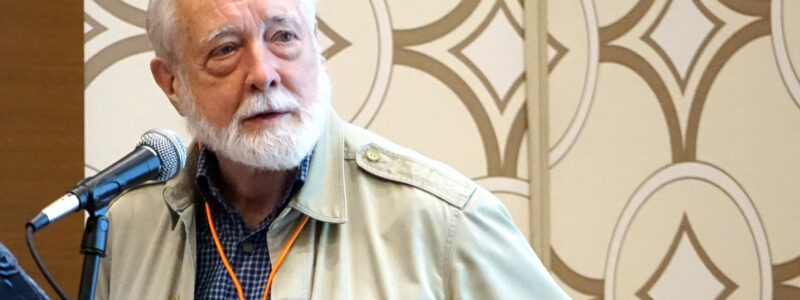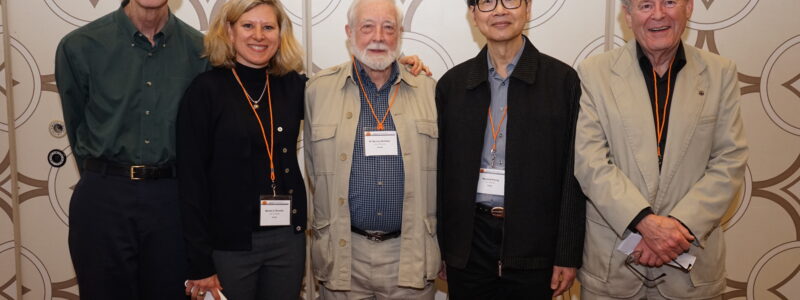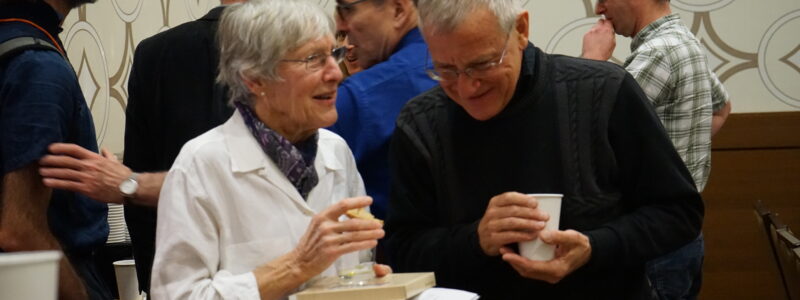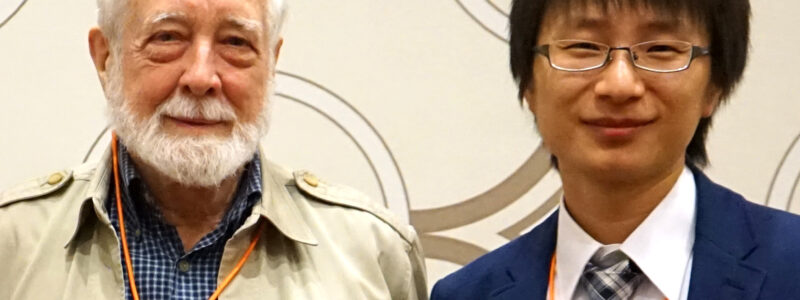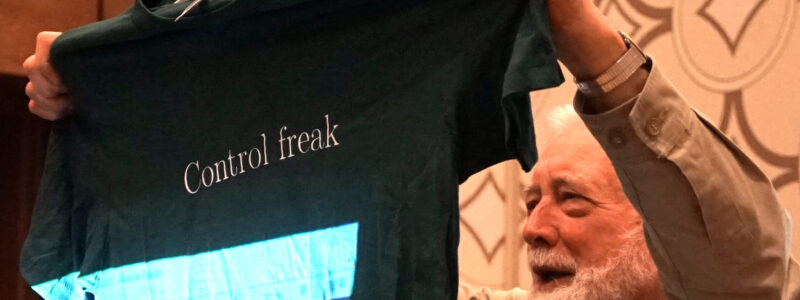“…to make an end is to make a beginning. The end is where we start from.” – T.S. Eliot, Four Quartets, ‘Little Gidding’, 1942
Let us start from the end: A group of scientists of international repute gather in a conference room in Los Angeles one Sunday in December 2014. They are here to listen to University Professor Emeritus W. Murray Wonham list his three wishes for the future of control theory.
These colleagues, former students and friends have flown from around the world to hear Wonham’s wishes and to list their own in celebration of his 80th birthday—an arbitrary end, then, of an eighth decade, but an occasion to celebrate a man who is himself the start of many things: fields of mathematical inquiry, conversations on literature, canoe trips, careers.
X0: Montreal, Quebec. A young Murray Wonham attends a boys’ school and learns that he prefers individual to team sports. Takes up sailing, and later, tennis. Studies engineering physics at McGill University. Ever the gentleman scholar, he embarks on a PhD in control engineering at University of Cambridge. There his supervisor tells him, “Take a look at these books, and let us know when you think of something brilliant.” He does, and successfully defends his thesis on stochastic control.
Joins Purdue University as an assistant professor, then the Research Institute for Advanced Studies (RIAS) in Baltimore, Maryland, as a research scientist. Works with Giorgio Szegő and Rudolf Kalman, dominant figures in the world of control theory. “RIAS to me was the lion’s den—here were all these fierce mathematicians,” remembers Wonham. Hired as an associate professor at Brown University, then joins NASA’s Electronics Research Center in the Office of Control Theory and Application. There he and Steve Morse begin to develop their geometric theory of multivariable control.
Wonham is a sinophile, oenophile and bibliophile, and a scholar of world history and literature. With an interest in languages, he has dabbled at various times in French, German, Spanish, Italian, Latin, Greek, Russian, Morse code, and elementary Mandarin.
In another thinker, these disparate tastes may appear to clash. Not so in Wonham. “Murray is a wonderful conversationalist, in terms of almost everything,” says Ted Davison, a fellow University Professor Emeritus of the University of Toronto Systems Control Group.
In 1970, after 15 years away, Wonham returns to Canada, joining the University of Toronto as an associate professor in the Department of Electrical Engineering. He is made full professor in 1972, University Professor in 1996, and University Professor Emeritus upon his retirement in 2000. These thirty years are held up by two pillars: teaching and research.
“Exposing a truth that was previously hidden, seeing a pattern that hadn’t been seen, creating a new way of looking at part of the world, sensing the germ of an idea and wrestling it into existence. From the outside it looks like a form of masochism, but you know all about that, you people,” Dr. Anne Wonham, Wonham’s wife, tells those assembled in Los Angeles. “And presumably about the rewards that it brings.”
Anne witnessed the “gestation and delivery of many papers—and of course, the book.”
The book. The book that launched a thousand ideas, Linear Multivariable Control: A Geometric Approach, is published by Springer-Verlag in 1974. It is read and digested by control theorists around the world.
“There was an enormous feeling of excitement…probably also because we didn’t really understand exactly what was going on in the book,” remembers Harry Trentelman, now a professor at University of Groningen in The Netherlands. “The magic around all this made me choose a career in control systems. That’s why the work of Murray Wonham has been so important to me—I find it very beautiful.”
Beauty, clarity and precision are repeated themes. “As many of you know, Murray is a perfectionist when it comes to the written word,” says Anne. “While clarity is always essential, he’s loath to use words of one syllable when there are polysyllabic alternatives.”
Such as ‘syzygy’, “the nearly straight-line configuration of three celestial bodies,” according to the Merriam-Webster dictionary. “Take a look at Wikipedia—syzygy is a word almost everyone uses every day, from astronomers to gnostics!” Wonham informs Professor Mireille Broucke, another member of the U of T Systems Control Group in a 2009 email.
Wonham’s three wishes for the future of control line up in syzygy: make things smarter; make things cleaner; make things simpler.
“I’d like to see a form of control theory that almost anybody in high school could read,” says Wonham. “A lot of control ideas I think could be expressed in a very technically simple way.”
The room in Los Angeles breaks into applause, and Murray Wonham’s colleagues and friends look forward to sharing a glass of wine, a toast and a story with him. As they’ve just heard, there is work to begin.
